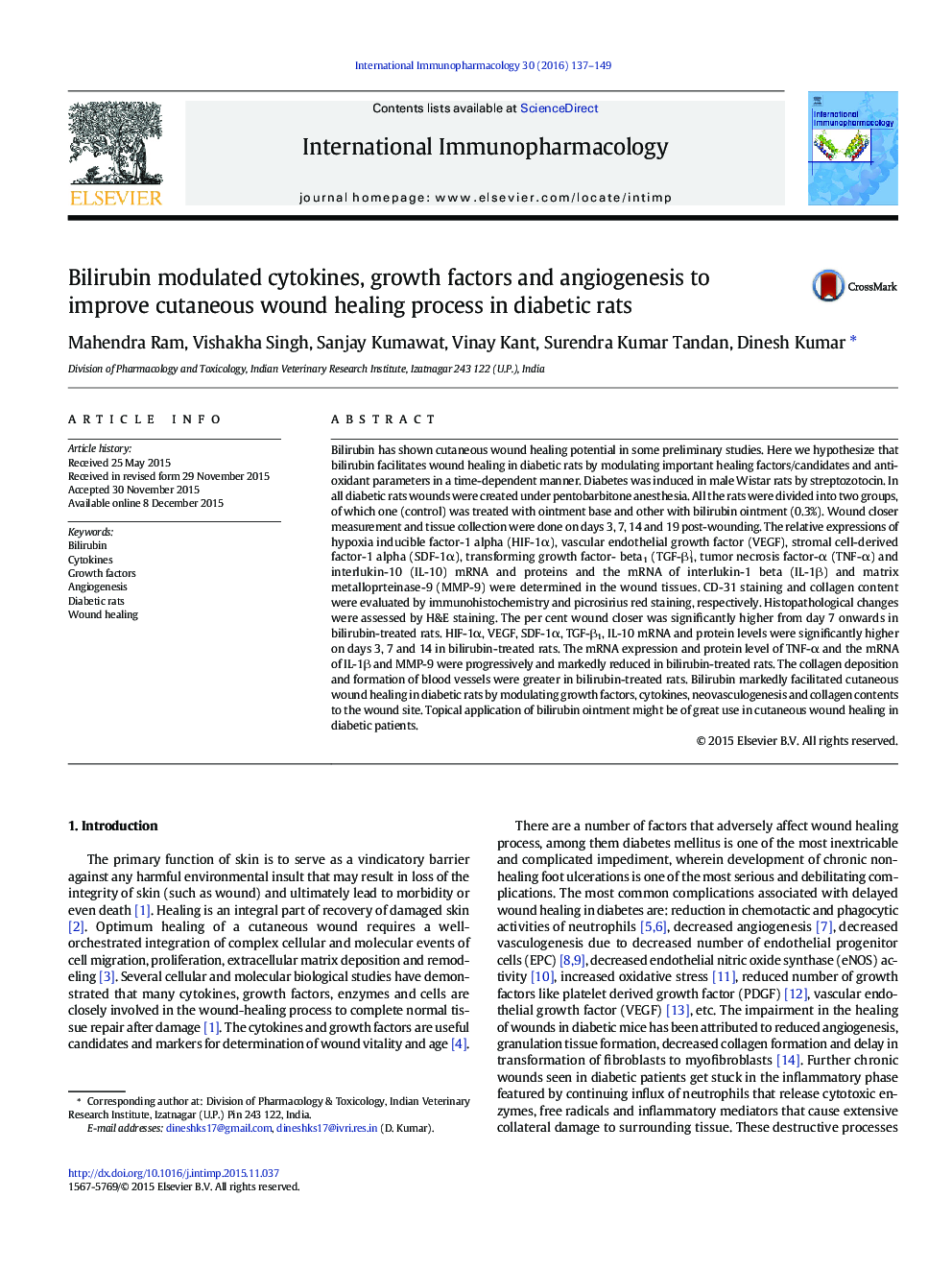| کد مقاله | کد نشریه | سال انتشار | مقاله انگلیسی | نسخه تمام متن |
|---|---|---|---|---|
| 2540358 | 1559760 | 2016 | 13 صفحه PDF | دانلود رایگان |
• The percent wound closer was significantly higher in bilirubin-treated rats.
• mRNA and protein levels of HIF-1α, VEGF, SDF-1α, TGF-β1, IL-10 were significantly higher in bilirubin-treated rats.
• TNF-α, MMP-9 and IL-1β were mRNA were significantly down regulated in bilirubin-treated rats.
• The collagen deposition and formation of blood vessels were greater in bilirubin-treated rats.
• Bilirubin markedly facilitated cutaneous wound healing in diabetic rats.
Bilirubin has shown cutaneous wound healing potential in some preliminary studies. Here we hypothesize that bilirubin facilitates wound healing in diabetic rats by modulating important healing factors/candidates and antioxidant parameters in a time-dependent manner. Diabetes was induced in male Wistar rats by streptozotocin. In all diabetic rats wounds were created under pentobarbitone anesthesia. All the rats were divided into two groups, of which one (control) was treated with ointment base and other with bilirubin ointment (0.3%). Wound closer measurement and tissue collection were done on days 3, 7, 14 and 19 post-wounding. The relative expressions of hypoxia inducible factor-1 alpha (HIF-1α), vascular endothelial growth factor (VEGF), stromal cell-derived factor-1 alpha (SDF-1α), transforming growth factor- beta1 (TGF-β1), tumor necrosis factor-α (TNF-α) and interlukin-10 (IL-10) mRNA and proteins and the mRNA of interlukin-1 beta (IL-1β) and matrix metalloprteinase-9 (MMP-9) were determined in the wound tissues. CD-31 staining and collagen content were evaluated by immunohistochemistry and picrosirius red staining, respectively. Histopathological changes were assessed by H&E staining. The per cent wound closer was significantly higher from day 7 onwards in bilirubin-treated rats. HIF-1α, VEGF, SDF-1α, TGF-β1, IL-10 mRNA and protein levels were significantly higher on days 3, 7 and 14 in bilirubin-treated rats. The mRNA expression and protein level of TNF-α and the mRNA of IL-1β and MMP-9 were progressively and markedly reduced in bilirubin-treated rats. The collagen deposition and formation of blood vessels were greater in bilirubin-treated rats. Bilirubin markedly facilitated cutaneous wound healing in diabetic rats by modulating growth factors, cytokines, neovasculogenesis and collagen contents to the wound site. Topical application of bilirubin ointment might be of great use in cutaneous wound healing in diabetic patients.
Journal: International Immunopharmacology - Volume 30, January 2016, Pages 137–149
